As I drove west past Port Alberni on Vancouver Island, British Columbia, on my way to a photo shoot, I watched in disbelief as the temperature gauge in my vehicle rose from 64°F (18°C) to 113°F (45°C). I thought something was wrong with my gauge, but a local radio station reported the same temperature. British Columbia had record-high temperatures throughout the province that week in June 2021.
I packed an extra water bottle in my day pack, slathered on sunscreen, and set out on foot over a rocky, barnacle-encrusted shoreline, timing my arrival for low tide. I lumbered past dead sea stars, crabs, and plainfin midshipmen (Porichthys notatus), a toadfish species I was here to photograph. The heat was intense; the smell, overwhelming.
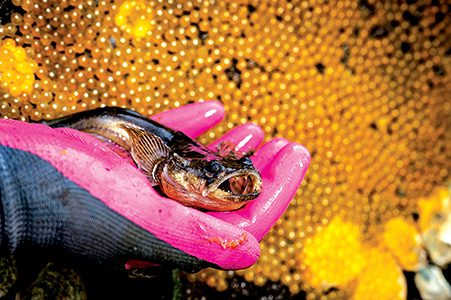
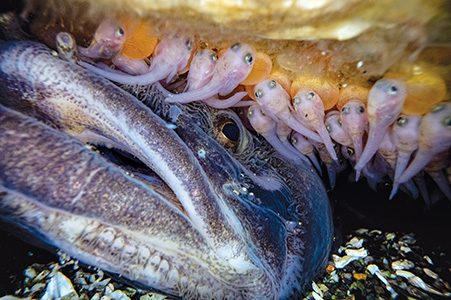
That record-setting week later became known as the 2021 heat dome. The effects were devastating: Hundreds of human lives were lost, rivers flooded from rapid snow and glacier melt, wildfires dramatically increased, crop and fruit yields plummeted, and a mass die-off of marine life occurred.
An international team of researchers claims this event would have been nearly impossible without climate change. An article in Nature by University of British Columbia assistant professor Rachel H. White, PhD, and others estimated that billions of marine invertebrates died during the heat dome.
Coauthor Christopher Harley, PhD, a professor in the University of British Columbia’s zoology department and the Institute for the Oceans and Fisheries, said that estimate is almost certainly substantially low. “The number of mussels and barnacles that died in British Columbia alone is likely closer to 10 billion, if not more,” he said, “and who knows how many of the little animals associated with mussel and barnacle habitats also perished.”
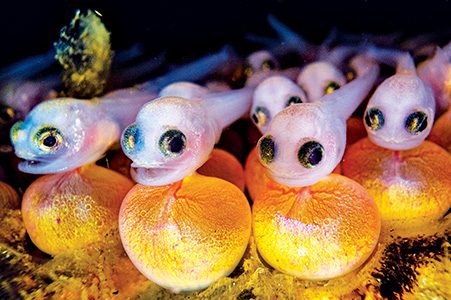
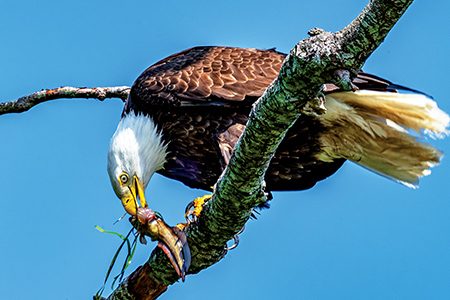
The Fish
As I crouched down and looked under rocks for midshipman nests, I didn’t know any of the horrifying heat dome statistics. All I knew was I didn’t bring enough water and couldn’t put in a full day’s work. I was using a special Laowa 24mm probe lens to carefully look for fish in the spaces between and under rocks. My head was dizzy from squatting low, often finding nothing suitable, and then walking to the next rock in the heat.
I started high up on the beach and mainly found dead fish. Midshipmen are extremely well adapted to withstand some time out of the water at low tide — they can breathe air and tolerate a wide temperature range — but these conditions were too much. I made my way closer to the water, where I found some living animals.
When I spotted a suitable nest, I tried to get comfortable on the sharp rocks and photograph what was happening inside the nest without disturbing anything. As I watched my camera’s tilted LCD screen, the little world I encountered was bizarre and fascinating.
I saw hundreds of tiny, pigmentless baby fish staring back at me like miniature ghosts. They were still attached to their orange yolk sacs as they practiced swimming like they were on an underwater treadmill. Their fathers (whether biological or adoptive) watched over them, protected them from intruders, and fanned oxygen toward their tiny gills. The little fish larvae were the length of a fingernail, while the fathers were up to the length of a bowling pin.
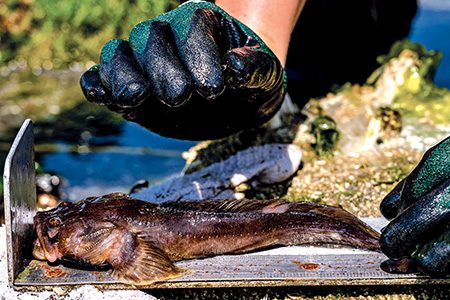
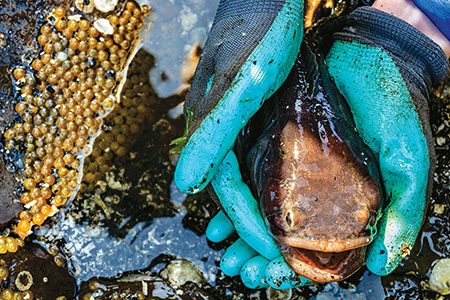
A father midshipman has made a long journey, swimming up from as deep as 1,200 feet (366 meters) to breed. This activity happens all along the western coast of North America, from Baja to Alaska. Once in the shallows, he’ll find — and possibly battle for — a suitable rock under which he can build a nest. He clears out a space and begins singing to attract a female. The song sounds like a low hum and creates a loud and mystifying symphony when males on the beach sing together.
A 1985 Los Angeles Times article (“Hummer a Bummer: Mysterious Buzz Torments Sleepless Houseboat Owners, Confounds Scientists”) described the experience of trying to sleep on a houseboat in Richardson Bay just north of San Francisco, California. “Some houseboat residents describe the noise as similar to the buzzing of an electric razor — only 10 times louder. Others say it sounds like an Air Force bomber or a neighbor using a powerful generator. One houseboat owner said the eerie humming is tuned to the middle C key on her piano.”
The song, however, is irresistible to a female plainfin midshipman and helps her decide who will protect her children. If she likes a male’s song, she will lay her eggs in the nest he built. The singing male has a chance to fertilize the eggs, but a second type of male, who is smaller and can’t build nests or hum, may sneak in and beat him to the punch. Regardless, the singer male will stay and guard the nest for several months in one of the most dramatic displays of male parental care in the animal kingdom.
The young fish are not quite free after they hatch; they stay glued to a rock as they absorb nutrients from their yolk sacs. Their father will guard them until they absorb their yolk sacs and then swim out of the nest. The tiny fish will first settle in nearby shallows, burrowing under the sediment and coming out only at night to feed. Once they mature more, it’s their turn to head to the deep sea and repeat the cycle.
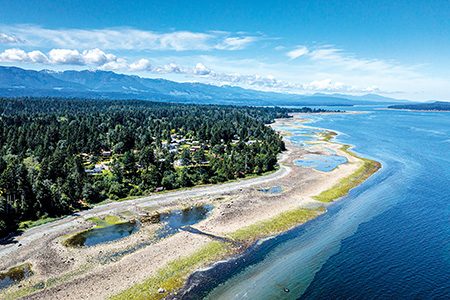
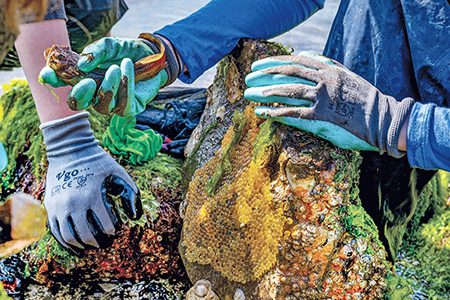
The Shallow–Deep Connection
Breeding midshipmen are a food source for many species along the coast — including seals, spiny dogfish, herons, and many others — but they are especially important for bald eagles. The breeding season for these singing toadfish coincides with the time of year bald eagles need to feed their chicks. Midshipmen bring nutrients and, more recently, contaminants such as dioxin from the deep sea into the shallows and even the forests where eagles build their nests.
Sigal Balshine, PhD, a professor and the director of the Aquatic Behavioural Ecology Laboratory at McMaster University, and her team are studying how much contamination is transferred between species. “Midshipmen can teach us so much about the deep sea without the expense and risk of physically going there. They are the ocean’s canaries in a coal mine,” she explained.
Balshine said about the 2021 heat dome: “My guess is populations got decimated by it, but we weren’t there to observe because of COVID travel restrictions.” She added, “But their populations appear to have recovered.”
As these heat events become more common, however, Balshine warned that animal populations may be unable to recover. Other animals that depend on them will also suffer in a sequence that reaches all the way down to the deep sea.
Shooting Fish in a Nest
As I tried to take photos on the sharp rocks in the heat, I noticed a strange blue streak cutting across every image. After some troubleshooting, I finally looked at the end of my lens and saw tiny water droplets. I tried to wipe them away, but they were inside the glass. Some moisture must have gotten inside the waterproof lens, and the heat was causing moisture to collect on the worst possible part of the lens. All my images were useless. I’d have to send away the lens for repair and wait another year to try and get my images.
I was angry, but my self-pity quickly felt silly as I realized the same heat that was responsible for the ruined images was killing all these animals and doing so much more damage. My little problem was nothing compared to the devastating effects of climate change.
© Alert Diver — Q2 2024